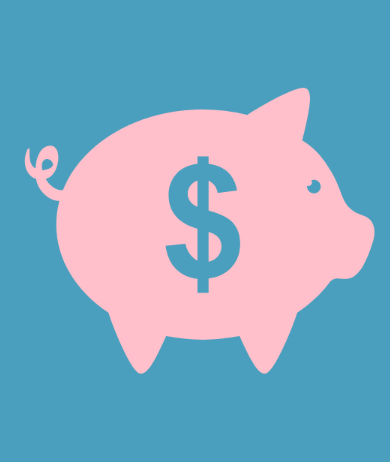Budgeting can feel overwhelming, especially when you’re working with a limited income. When I first started managing my finances as a single mom with a part-time job, I often wondered how I could balance paying my bills while still saving money. It took some time, but I learned how to craft a realistic budget that worked even with a small income, and I’m here to share how you can do the same.
Creating a budget on a small income is not just about cutting back—it’s about making strategic choices and having a clear plan for your money. Whether you’re looking to get out of debt, save for something special, or simply make sure your bills are paid, budgeting can set you up for success.
Understand Why You Want to Budget
Before diving into numbers, it’s essential to understand your motivation for budgeting. Money is often tied to our emotions, and our spending habits are frequently influenced by how we feel in the moment, rather than a well-thought-out plan.
A strong reason for budgeting will help you stay on track. Some common motivations for budgeting could include:
- Gaining financial security
- Saving for future goals (like a house or vacation)
- Paying off debt
- Having a structured plan for where your money goes
Without a budget, it’s easy for money to slip through your fingers without you even realizing where it went. I’ve personally used budgeting to get out of debt, buy a house, start a business, and have more control over my financial future.
Track Your Spending
Tracking your expenses is a crucial step, even though it might not sound like the most fun activity. Without this, your budget won’t be accurate or realistic. Tracking your spending helps you understand where your money is actually going.
Here are two main reasons why tracking your spending is vital:
- Creating a Realistic Budget: It’s easy to make assumptions about how much you’re spending in different areas. You might think your grocery bill is around $400 a month, but when you add it all up, it could be closer to $800. Knowing your actual spending helps you create a more accurate budget.
- Holding Yourself Accountable: Writing down every expense might feel uncomfortable at first, but it’s an excellent way to keep yourself accountable. Seeing all your spending laid out can make it easier to understand why you’re not reaching your financial goals.
Tracking doesn’t have to be complicated. You can simply write everything down in a notebook or use a budgeting app. Keeping your receipts and reviewing them regularly also helps you stay on top of things. A great way to start is by using a cash envelope system to limit overspending.
Assess Your Income
Living on a small income often means you have to carefully manage your expenses. It can be especially challenging when unexpected costs arise. However, it’s also important to look for ways to increase your income. While time might be limited, there are side gigs that don’t take up much of your time but can help boost your financial situation.
Taking on small freelance projects, babysitting, or even offering services like dog walking can provide a helpful extra stream of income. Finding ways to supplement your earnings is an essential part of making your budget work.
Create a Plan for Your Money
Once you have a clear idea of your income and expenses, it’s time to make a plan. Ideally, your income should cover your essential expenses, and then you can allocate any remaining funds toward savings or goals.
Start by ensuring that you’re spending wisely. When you have money left over, decide where it will go—whether it’s for debt repayment, savings for a future goal, or a small amount of fun money. Having a zero-sum budget (where every dollar has a purpose) can help ensure you are making the most of your money.
For example, if you have $100 left after bills, you might allocate:
- $50 for entertainment or personal expenses
- $25 toward debt repayment
- $25 for savings
These amounts can be adjusted depending on your priorities, but always make sure everything is accounted for in your budget.
Prepare for Emergencies
Living on a small income can make it even more stressful when an unexpected expense arises. To avoid being caught off guard, try to build an emergency fund. While it may seem difficult to save when money is tight, even a small buffer can prevent financial setbacks in the future.
Emergencies like medical bills, car repairs, or broken appliances can derail your finances if you aren’t prepared. By setting aside a small amount each month, you can build an emergency fund over time and have a safety net when life throws you a curveball.
Cut Back on Expenses
Now that you have your budget in place, it’s time to look at areas where you can cut back. The lower your expenses, the more money you can direct toward your goals. Start with your fixed expenses—such as rent or loan payments—and look for ways to reduce them. For example, you can contact your service providers to negotiate lower bills, shop for cheaper insurance plans, or switch to more affordable housing.
For variable expenses like groceries, dining out, and entertainment, there’s room for savings too. Meal planning is an excellent way to cut food costs, and limiting dining out or finding free entertainment can significantly reduce your spending.
Find Low-Cost Entertainment
Everyone needs a break, even on a tight budget. Fortunately, there are plenty of low-cost or free activities you can enjoy without spending a lot. Consider going for a hike, visiting a free museum, or hosting a backyard BBQ with friends. Simple activities can provide a great escape without breaking the bank.
Do Things Yourself
While outsourcing certain tasks is fine, there are often things you can do yourself to save money. For example, cleaning your house, washing your car, or mowing the lawn can be done for free, cutting out those regular expenses. Taking on these tasks yourself will free up more money to put toward savings or other goals.
Be Kind to Yourself
Budgeting on a small income can be tough, and mistakes are going to happen. Don’t be too hard on yourself if you slip up or face setbacks. Just remember that budgeting is a journey, and every step you take brings you closer to financial stability.
If things don’t go according to plan, make adjustments and keep moving forward. Understanding what’s important to you and keeping your goals in sight will help you stay motivated.
Final Thoughts
Living on a small income doesn’t have to mean living paycheck to paycheck. By creating a budget, tracking your spending, and finding ways to cut costs, you can take control of your finances and work toward your goals. It may take time, but with dedication and patience, you can achieve financial security—even on a small income.









